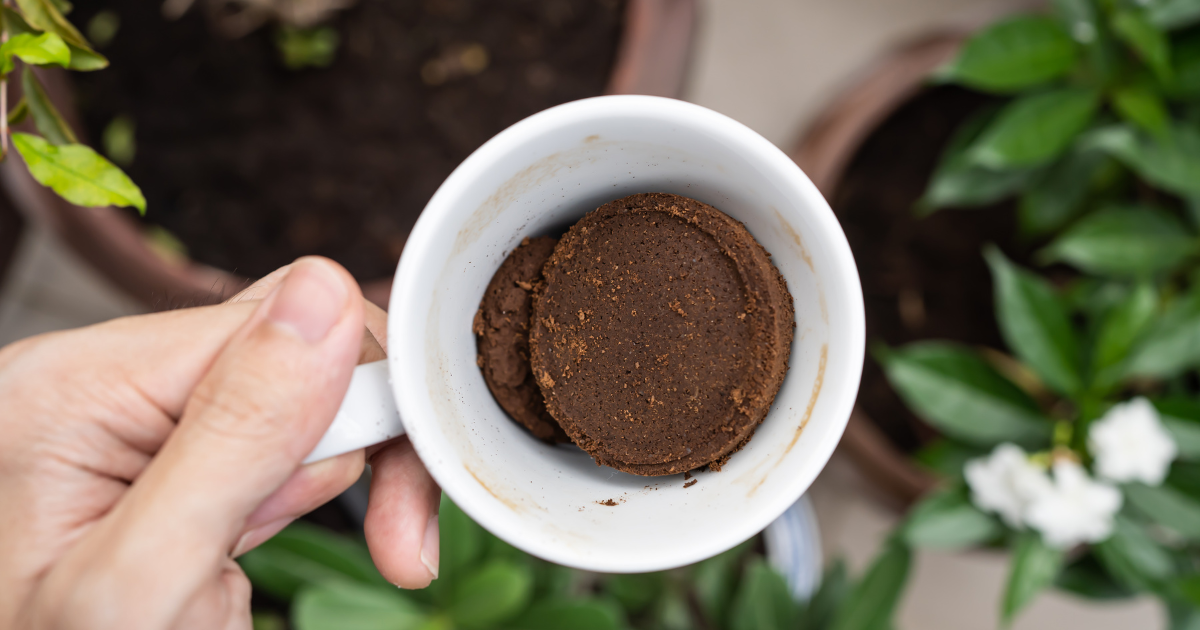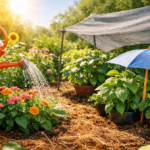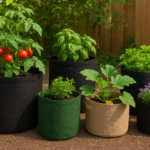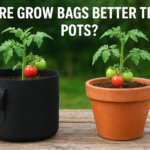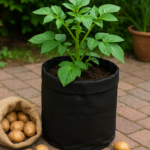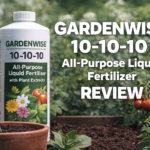In indoor gardening, enthusiasts constantly seek natural and sustainable ways to nurture their beloved plants. Amidst this quest, a surprisingly potent ally emerges from the remnants of our morning ritual: coffee grounds. While often overlooked, these humble leftovers from your daily brew hold remarkable potential for fostering the health and vibrancy of indoor plants. Rich in nutrients like nitrogen, potassium, and phosphorus, coffee grounds offer a nourishing boost to soil fertility. Beyond their nutritional value, they contribute to soil structure improvement and pH balance, which are vital aspects of plant health.
Additionally, their natural pest-repellent properties add another benefit for indoor gardeners. However, navigating the intricacies of using coffee grounds requires understanding their application methods and addressing common concerns.
This article delves into the grounds for growth, exploring the multifaceted benefits and practical considerations of incorporating coffee grounds into indoor plant care routines.
About coffee grounds
Coffee grounds, the remnants of brewed coffee beans, are a valuable resource beyond the morning cup. Rich in nutrients such as nitrogen, potassium, and phosphorus, coffee grounds offer a natural boost to plant growth and soil fertility. When incorporated into soil, they enhance its structure by improving drainage and aeration while enriching it with organic matter that supports microbial activity. Additionally, the slightly acidic pH of coffee grounds can help balance alkaline soils, although moderation is vital to avoid over-acidification. Some gardeners also believe in their pest-repellent properties despite limited scientific evidence.
Furthermore, coffee grounds are a valuable addition to compost piles, aiding in decomposition and contributing to nutrient-rich compost. With their multifaceted benefits, coffee grounds provide a sustainable, eco-friendly solution for nurturing healthy plants and enriching garden soil.
Benefits of using coffee grounds for indoor plants

Using coffee grounds for indoor plants offers several benefits:
- Nutrient-Rich: Coffee grounds are packed with nutrients like nitrogen, potassium, and phosphorus, essential for plant growth. When added to the soil, they provide a natural source of these nutrients, promoting healthier and more vigorous growth.
- Soil Improvement: Coffee grounds can enhance soil structure by improving drainage and aeration. Their organic matter content also contributes to soil health by supporting beneficial microbial activity, which aids in nutrient cycling and overall soil fertility.
- pH Regulation: Coffee grounds’ slightly acidic nature can help balance the pH of alkaline soils, creating a more favorable environment for plant roots to absorb nutrients effectively. However, it’s important to monitor soil pH levels to prevent over-acidification.
- Pest Deterrent: While not scientifically proven, some gardeners believe coffee grounds act as a natural pest repellent, deterring pests like slugs, snails, and certain insects. This can help protect indoor plants from damage caused by pests.
- Composting: Coffee grounds are an excellent addition to compost piles or bins. They provide nitrogen to the composting process, helping to speed up decomposition and produce nutrient-rich compost that can be used to fertilize indoor plants, creating a sustainable and eco-friendly gardening practice.
Comparison with synthetic fertilizers
When comparing coffee grounds with synthetic fertilizers for indoor plants, several factors come into play:
- Nutrient Content: Coffee grounds contain various nutrients like nitrogen, potassium, and phosphorus, albeit in smaller quantities compared to most synthetic fertilizers. While synthetic fertilizers often provide specific nutrient formulations tailored to plant needs, coffee grounds offer a more balanced mix of nutrients and organic matter.
- Slow Release: Unlike synthetic fertilizers, which may release nutrients quickly and require frequent application, coffee grounds release nutrients gradually as they decompose. This slow-release nature can give plants a more sustained nutrient supply over time, reducing the risk of nutrient leaching and minimizing the need for frequent reapplication.
- Soil Health: Synthetic fertilizers may improve plant growth in the short term but can have long-term adverse effects on soil health. They may disrupt microbial activity, degrade soil structure, and contribute to nutrient imbalances and environmental pollution. In contrast, coffee grounds contribute to soil health by improving structure, supporting microbial activity, and enhancing soil fertility.
- Environmental Impact: Synthetic fertilizers are often manufactured using non-renewable resources and can contribute to pollution and ecological degradation when overused or improperly applied. On the other hand, coffee grounds are a byproduct of a widely consumed beverage and can be recycled and repurposed, reducing waste and environmental impact.
- Cost and Accessibility: Coffee grounds are readily available and inexpensive, making them a cost-effective alternative to synthetic fertilizers. They can be easily obtained from home coffee brewing or local coffee shops, providing a sustainable and accessible source of nutrients for indoor plants.
How to Prepare Coffee Grounds for Indoor Plants?

Preparing coffee grounds for indoor plants is a simple yet essential step to ensure they provide maximum benefit without any adverse effects. Here’s how to do it:
- Collecting Coffee Grounds: Collect used coffee grounds from your daily brews. You can accumulate them over time by saving the grounds from your morning coffee routine or asking for used grounds from local coffee shops.
- Drying the Grounds: Spread the collected coffee grounds on a tray or baking sheet in a thin layer. Leave them to dry completely by placing them in a sunny spot outdoors or using a dehydrator or oven on low heat. Drying the grounds helps prevent mold growth when you use them in your indoor plants.
- Storing the Dried Grounds: Store them in an airtight container once the coffee grounds are thoroughly dried. This will keep them fresh and prevent them from absorbing any moisture from the air, which could lead to mold formation.
How do you use coffee grounds for indoor plants?
Using coffee grounds for indoor plants can be beneficial if done correctly. Here’s how you can do it:
- Collect Used Coffee Grounds: Save the used coffee grounds after making your morning coffee. Allow them to dry out a bit before using them on your plants.
- Mix with Potting Soil: Mix dried coffee grounds into your potting soil mix before planting or repotting your indoor plants. Mix the coffee grounds thoroughly with the soil to ensure even distribution.
- Top Dressing: Sprinkle a thin layer of dried coffee grounds on top of the soil around your plants. This can help improve soil structure and add nutrients over time as the grounds break down.
- Make a Coffee “Tea”: Steep used coffee grounds in water to create a coffee “tea.” Let the mixture sit for a few hours or overnight, then strain out the grounds. Use the diluted coffee mixture to water your plants. This can provide a gentle nutrient boost.
- Compost: If you have a compost bin, you can add used coffee grounds to it. Over time, the coffee grounds will decompose and enrich your compost with valuable nutrients. You can then use the compost to feed your indoor plants.
- Monitor Plant Response: After adding coffee grounds to your indoor plants, monitor how they respond. If you notice any adverse effects such as wilting, yellowing leaves, or soil acidity, reduce or stop using coffee grounds.
Is coffee good for all houseplants?
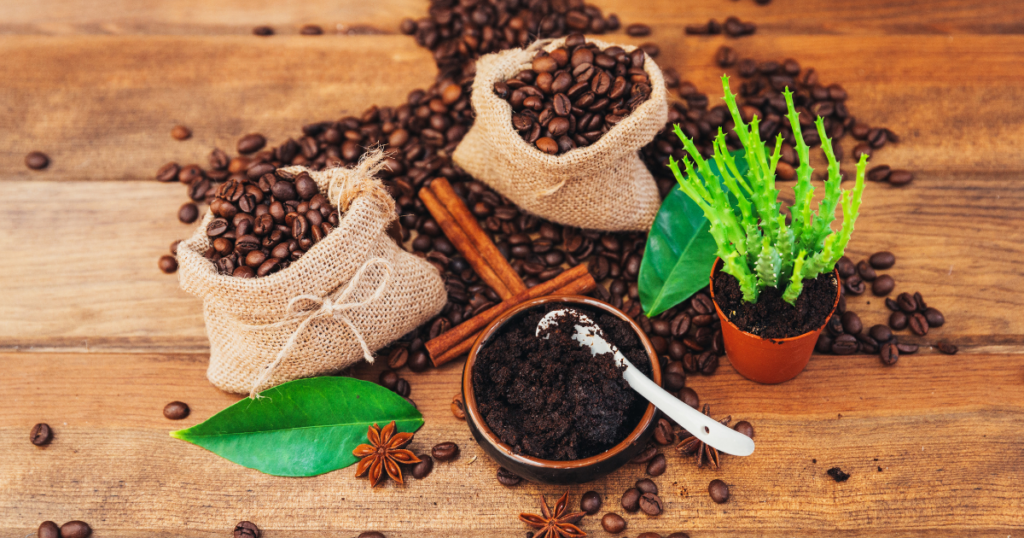
Coffee can be beneficial for some houseplants, but it’s not universally beneficial for all of them. Used coffee grounds contain nutrients that can be beneficial for plants, such as nitrogen, potassium, and phosphorus. These nutrients can help with plant growth. Additionally, coffee grounds can improve soil structure and drainage.
However, there are a few caveats. Coffee grounds can be acidic, so they may not be suitable for plants that prefer alkaline soil. Also, too much coffee grounds can harm plants or attract pests. It’s essential to use coffee grounds in moderation and to monitor how your plants respond.
Some acid-loving plants respond well to coffee grounds, including azaleas, roses, camellias, and hydrangeas. However, it’s always a good idea to research your plants’ specific needs before adding any new substances to their soil.
Which plants do not like used coffee grounds?
Plants that prefer alkaline soil generally do not appreciate the acidity of coffee grounds. Examples of such plants include:
- African Violets prefer slightly acidic to neutral soil and may not thrive if exposed to too much acidity.
- Asparagus Ferns: Asparagus ferns prefer slightly acidic to neutral soil, and too much acidity from coffee grounds can disrupt their growth.
- Chinese Evergreens: These plants prefer neutral to slightly acidic soil and may not tolerate the acidity of coffee grounds well.
- Spider Plants: While spider plants are relatively adaptable, they generally prefer slightly acidic to neutral soil and may not benefit from coffee grounds.
- Peace Lilies: Peace lilies prefer slightly acidic to neutral soil. Excessive acidity from coffee grounds can cause harm to their roots.
Potential Risks of Using Coffee Grounds
Using coffee grounds in gardening, including for indoor plants, can offer numerous benefits, but it’s essential to be aware of potential risks associated with their use:
- pH Imbalance: Coffee grounds are acidic, which can alter the soil’s pH level. While some plants, like acid-loving varieties, thrive in acidic conditions, others may suffer if the pH becomes too low. This imbalance can affect nutrient availability and hinder plant growth.
- Risk of Mold: Coffee grounds are organic matter that can retain moisture, creating an environment conducive to mold growth. When applied excessively or left too wet, coffee grounds can become a breeding ground for harmful molds, which may lead to root rot or other plant diseases.
- Nitrogen Overload: While coffee grounds are a good nitrogen source, excessive use can lead to nitrogen overload in the soil. Too much nitrogen can cause nutrient imbalances, stunted growth, burned foliage, or even plant death.
- Attracting Pests: Wet coffee grounds can attract pests like fruit flies, ants, or cockroaches. These pests may not only be a nuisance but can also damage your indoor plants or spread to other areas of your home.
- Caffeine Concerns: Some gardeners worry about the caffeine content in coffee grounds and its potential impact on plants. While caffeine can inhibit seed germination in some cases, the amount present in used coffee grounds is typically minimal and unlikely to cause harm to established plants.
Tips for Using Coffee Grounds Safely
Using coffee grounds safely in your indoor gardening endeavors is crucial to ensure the health and well-being of your plants. Here are some tips to help you use coffee grounds safely:
- Moderation is Key: While coffee grounds can provide valuable nutrients to your plants, it’s essential to use them in moderation. Avoid applying excessive amounts at once, as this can lead to nutrient imbalances or other issues.
- Monitor Soil pH: Regularly monitor the pH level of your soil when using coffee grounds. Some plants prefer acidic conditions, while others require neutral or alkaline soil. Adjust the coffee grounds used based on your plant’s specific pH preferences to avoid pH-related problems.
- Mix Thoroughly with Soil: When incorporating coffee grounds into your indoor plant pots, ensure thorough mixing with the soil. This helps distribute the nutrients evenly and prevents localized acidity that could harm plant roots.
- Watch for Signs of Stress: Keep an eye on your plants for signs of stress or nutrient deficiency. Yellowing leaves, stunted growth, or leaf burn could indicate that you’re using too many coffee grounds or your plants are experiencing pH-related issues.
- Use with Compost: Mix coffee grounds with compost before applying them to indoor plants. Composting coffee grounds with other organic materials can help balance their acidity and improve plant nutrient availability.
- Avoid Wet Applications: Avoid applying wet coffee grounds directly to the soil surface to prevent mold growth and moisture-related issues. Instead, allow the grounds to dry thoroughly before mixing them into the soil or using them as a top dressing.
- Rotate Application Areas: If you have multiple indoor plants, rotate the application of coffee grounds among them. This helps prevent the buildup of acidity in one area and ensures all your plants receive the benefits of coffee ground fertilization.
- Observe Plant Response: Pay attention to how your plants respond to using coffee grounds. If you notice any adverse effects, such as wilting or leaf discoloration, adjust your usage accordingly or consider alternative fertilization methods.
Alternative Uses for Coffee Grounds in Gardening
Coffee grounds are versatile and can be repurposed in various ways to benefit your gardening endeavors beyond just fertilizing your indoor plants. Here are some alternative uses for coffee grounds in gardening:
Composting:
Incorporate coffee grounds into your compost pile to enrich the compost with nitrogen and other nutrients. Coffee grounds are considered a “green” material, adding valuable organic matter to the compost and helping to balance the carbon-to-nitrogen ratio.
Soil Amendment:
Mix coffee grounds into the garden or potting mix to improve soil structure and drainage. The organic matter in coffee grounds helps to aerate the soil and retain moisture, creating a healthier growing environment for plants.
Mulching:
Apply a layer of coffee grounds as mulch around plants to suppress weeds, retain soil moisture, and regulate soil temperature. Coffee grounds also add nutrients to the soil as they break down, providing a slow-release fertilizer for your plants.
Pest Deterrent:
Scatter coffee grounds around the base of plants to deter pests like slugs, snails, and ants. The gritty texture of coffee grounds can irritate pests and create a barrier that discourages them from reaching your plants.
Seed Starting:
Use coffee grounds as a seed-starting medium or an additive to seed-starting mixes. The organic matter in coffee grounds helps to retain moisture and provides a gentle source of nutrients for seedlings as they grow.
Acid-Loving Plants:
To increase soil acidity over time, apply coffee grounds to the soil around acid-loving plants like azaleas, hydrangeas, and blueberries. These plants thrive in acidic conditions and will benefit from the pH-lowering properties of coffee grounds.
Worm Bin Addition:
Add coffee grounds to your vermicompost bin as a supplemental food source for composting worms. Worms will happily consume coffee grounds and other organic matter, producing nutrient-rich worm castings for your garden.
Repelling Cats:
Sprinkle coffee grounds around areas of your garden where you want to deter cats from digging or lounging. The strong scent of coffee can be off-putting to cats, helping to protect your plants from unwanted feline visitors.
Conclusion:
In conclusion, coffee grounds can be a valuable resource for indoor gardening, providing nutrients, improving soil structure, and offering various other benefits. However, using them wisely is essential, avoiding overuse and closely monitoring plant health. By incorporating coffee grounds responsibly into your gardening routine, you can promote the health and vitality of your indoor plants while minimizing potential risks.
FAQs:
Can coffee grounds replace regular fertilizer entirely?
No, coffee grounds should be used as a supplement to regular fertilizer rather than a replacement. They provide valuable nutrients but may only meet some of your plant’s needs independently.
Are there any plants that should never be exposed to coffee grounds?
Yes, plants that prefer alkaline soil or are sensitive to acidity, such as some succulents and cacti, may not tolerate coffee grounds well.
How often should I water my plants after applying coffee grounds?
Watering frequency depends on various factors such as plant type, pot size, and environmental conditions. Monitor soil moisture and adjust watering accordingly, ensuring the soil doesn’t become too dry or too wet.
Can I use coffee grounds from flavored coffee?
Avoid flavored coffee grounds, as they may contain additives or oils that could be harmful to plants. Stick to plain, used coffee grounds for gardening purposes.
Are there any types of coffee grounds that are better for plants?
Any used coffee grounds can benefit plants, but organic, pesticide-free coffee grounds are preferable to minimize potential contaminants.

